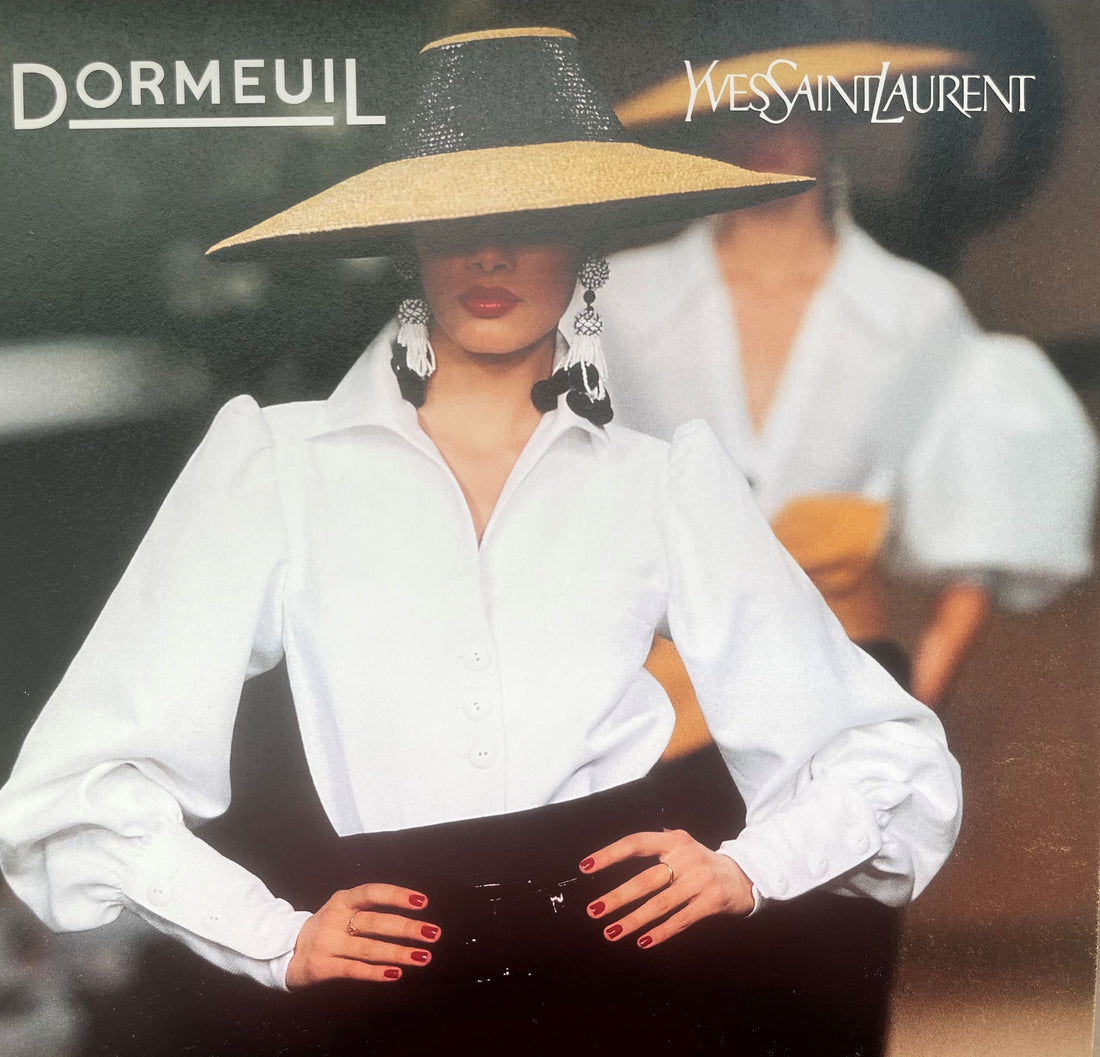Iconic designer Yves Saint Laurent left an indelible mark on the fashion industry with his visionary approach, not only in dressing women but also through the role held by textile design in his collections. From his early years in Algeria to the heights of the Parisian haute couture scene, Saint Laurent's passion for fabrics led him to redefine the boundaries of creativity, crafting tuxedo suits for women. Delve into his extraordinary journey and his profound love for textiles.

Honing a fine appreciation for the woven cloth
Yves Saint Laurent was born on 1st August 1936 in Oran, Algeria. From a young age, Saint Laurent showed an innate talent and fascination with fabrics and clothing. Raised in a French colonial environment, Saint Laurent’s early exposure to vibrant colours, rich textures, and diverse cultural influences profoundly shaped his artistic sensibilities. At the age of 17, he left Algeria for Paris, where he pursued formal training at the Chambre Syndicale de la Haute Couture. His exceptional talent quickly caught the eye of Christian Dior, who hired him as an assistant in 1955.
It was during his tenure at Dior that Saint Laurent began to showcase his unparalleled skill in selecting textiles for fashion design. His innovative use of fabrics, ranging from luxurious silks to unconventional materials, redefined the boundaries of haute couture. Saint Laurent’s keen eye for texture and pattern allowed him to create garments that were not only aesthetically pleasing but also structurally innovative and comfortable to wear. Yves Saint Laurent fabrics and collections were soon to carry an air of exclusivity.
Yves Saint Laurent considered Fabrics to be central to his vision
In 1961, Yves Saint Laurent launched his eponymous fashion house at the tender age of 25, heralding the dawn of a new era in couture.
"Textiles are everything," Saint Laurent once said.

Throughout his illustrious career, textiles remained at the heart of Saint Laurent’s creative process. He collaborated with renowned fabric manufacturers and artisans to develop exclusive textiles that reflected his distinctive aesthetic. Saint Laurent selected and developed fabrics for both their technical properties and unparalleled appearance and feel. Whether experimenting with intricate embroidery techniques or pioneering new dyeing methods, Yves Saint Laurent’s fabrics were always creative and forward looking.
Concurrently, Dormeuil solidified its reputation as a premier fabric supplier to Paris’ esteemed luxury fashion houses, boasting a clientele steeped in European history, such as Churchill himself. Yves Saint Laurent called upon Dormeuil to develop fabrics for his innovative designs, which we will discuss in the next chapter.

It also results in an extensive collection of archival swatches and innovative fabric creations to inspire contemporary designers looking to follow in Saint Laurent’s footsteps.
Le Smoking, dressing women in an Yves Saint Laurent suit
Yves Saint Laurent's influence on evening wear, particularly in making the tuxedo suit androgynous, is legendary in the world of fashion. Renowned for his avant-garde reinterpretations of classic menswear, Saint Laurent introduced the concept of Le Smoking in 1966: a groundbreaking tuxedo suit design for women.

Challenging traditional gender norms, Le Smoking put women in suits that complemented their bodies. As an alternative to formal gowns, Yves Saint Laurent’s sleek and sharp tailored suits for women first ruffled feathers in the fashion world of the time. Soon, the unique design became synonymous with effortless elegance and attracted a clientele that ranged from Hollywood celebrities to fashion-forward icons. With Le Smoking, Monsieur Saint Laurent not only transformed the landscape of evening wear but also left an enduring legacy both in clothing and textile design.
Dormeuil’s story is interwoven to that of the enfant terrible of French haute-couture. Named after a specific type of fabric that is used for tuxedos, Dormeuil’s Grain de Poudre bunch draws inspiration from the very first barathea cloth the house designed for Yves Saint Laurent. Woven entirely from high-quality worsted wool, this bunch offers swatches varying from unusual off-white and dark green to more conventional navy blue and black options. A recogniseable weave for textile connoisseurs, the elegant yet comfortable “barathea” cloth displays a unique handle and surface appearance. This reference was designed to exude an unmistakable air of sophistication. A favourite for the couture houses we work with, our Barathea reference is sought after for its texture, impeccable drape and matte appearance.
The Grain de Poudre & Tuxedo bunch features 170’s super worsted wool for draping qualities that complement creative designs, rather than restrict them. The bunch includes different weights, from 250 to 450 gr, and luxurious blends of worsted wool, silk and cashmere. Specifically developed for ceremonial and evening wear, Barathea and the rest of the references in this bunch reflect contemporary fashion’s increasingly gender fluid styles, without a doubt a lasting influence of Monsieur Saint Laurent’s creative vision.
A lasting Influence on Couture worldwide
Throughout the 1970s and 1980s, Yves continued to draw inspiration from art, culture, and his own personal experiences, translating them into exquisite fabric compositions that captured the imagination of fashion enthusiasts worldwide. He selected each fabric meticulously to turn his unique vision of the world into reality. His ability to seamlessly blend traditional craftsmanship with contemporary sensibilities set him apart as a true master of his craft.

Beyond his contributions to fashion, Yves Saint Laurent's legacy lives on as a testament to the transformative power of textiles, including in Dormeuil’s collections. The black barathea cloth Dormeuil specifically created forYves Saint Laurent continues to be in high demand today. Monsieur Saint Laurent’s enduring influence serves as a reminder that the true magic of fashion lies not only in the garments themselves but also in the stories woven into every thread.

